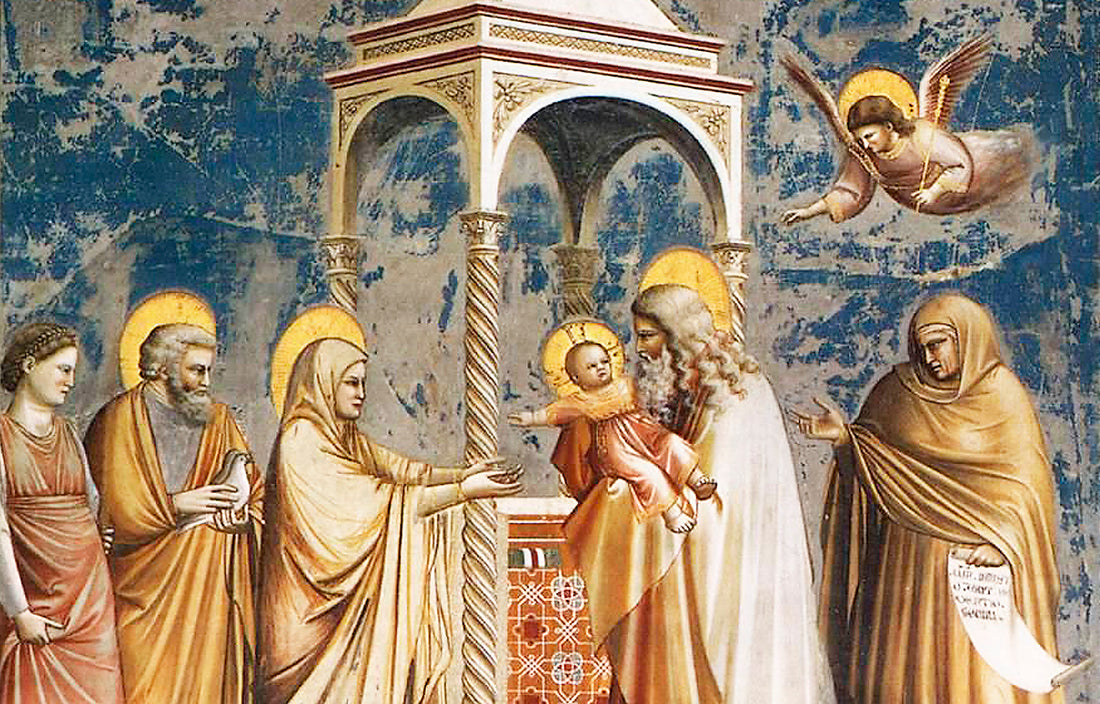In the ecclesiastical calendar, February 2nd marks a pivotal event – the Presentation of Jesus at the Temple. This profound occurrence is eloquently detailed in the Gospel of Luke and is also recognized as the Feast of the Candelora. With roots dating back to the 4th century, this venerable celebration unfolds forty days after the birth of Jesus. Originating in Jerusalem, it gradually permeated the Western realms during the mid-7th century, thanks to the influence of Pope Sergius I. The focal point of this celebration on February 2nd is the purification of Mary.
Evolution Through History: From Mary's Purification to the Presentation of the Lord
In the 1960s, spurred by liturgical reforms, the feast underwent a significant transformation, returning to its original essence as the "Presentation of the Lord." This pivotal shift redirected the emphasis from Mary to Christ, underscoring His paramount role in this sacred event.
Tracing the Sacred Roots of the Feast
Immersed in the devout adherence to the Law of Moses, Mary and Joseph meticulously followed the prescribed rituals post the birth of Jesus. According to tradition, every Jewish woman was obligated to partake in a purification rite at the Temple forty days after the conception of a boy or eighty days after the birth of a girl.
A pivotal facet of this ritual involved consecrating every firstborn male to the Lord. This sacred act was accompanied by the offering of a pair of turtledoves or pigeons as a sacrifice. The significance of this practice is underscored by its historical roots, harking back to divine favor bestowed upon the Jews. Their firstborn males were spared during the tenth plague that befell the Egyptians, resulting in the tragic loss of all their firstborns.
The Revelation of Jesus as the Savior
Forty days post the joyous celebration of Christmas, Mary and Joseph brought Jesus to the Temple in Jerusalem, adhering to the prescribed rituals. Despite Mary's exemption from purification, she dutifully observed the ritual in accordance with the law.
In Jerusalem, there was a man named Simeon, devout and guided by the Holy Spirit, who had been told he would not see death before witnessing the Messiah of the Lord. Moved by the Spirit, he went to the temple and took the baby Jesus in his arms, praising God: "Now, Lord, let your servant depart in peace, according to your word; for my eyes have seen your salvation, prepared in the presence of all peoples, a light for revelation to the Gentiles, and for glory to your people Israel". Jesus' parents marveled at what was said about him. Simeon blessed them and spoke to Mary, his mother: "Behold, this child is appointed for the fall and rising of many in Israel, and for a sign that is opposed (and a sword will pierce through your own soul also)". There was also a prophetess, Anna, of the tribe of Asher, who was very old. She had lived with her husband seven years after her marriage, and then as a widow until she was eighty-four. She did not depart from the temple, worshiping with fasting and prayer night and day. And coming up at that very hour, she began to give thanks to God and to speak of him to all who were waiting for the redemption of Jerusalem. (Luke 2, 22-40)
In that sacred encounter, the divinity of Jesus was revealed for the first time through a human prophet. Simeon was the first to understand and proclaim Jesus as the Savior of the World. He also prophesied that this salvation would be accomplished through a sword of sorrow that would pierce the Immaculate Heart of Mary.
The Feast of the Candelora
The Feast of the Candelora, dating back to the 5th century, is synonymous with the Presentation of the Lord. Its distinctive feature is the ceremonial use of blessed lit candles, a tradition rooted in Simeon's proclamation: "My eyes have seen your salvation, prepared in the presence of all peoples" (Luke 2, 29-32).
The ritual of candle blessing, documented as early as the 10th century, serves as a tangible symbol of Christ's transfiguration—a bearer of divine light entering the world. The Feast of the Candelora becomes a moment of revelation and light, as the glow of the blessed candles symbolizes the path of faith and redemption illuminated by Jesus, the Savior.
Let's all light a candle on this festive day to feel even closer to Our Lord.
